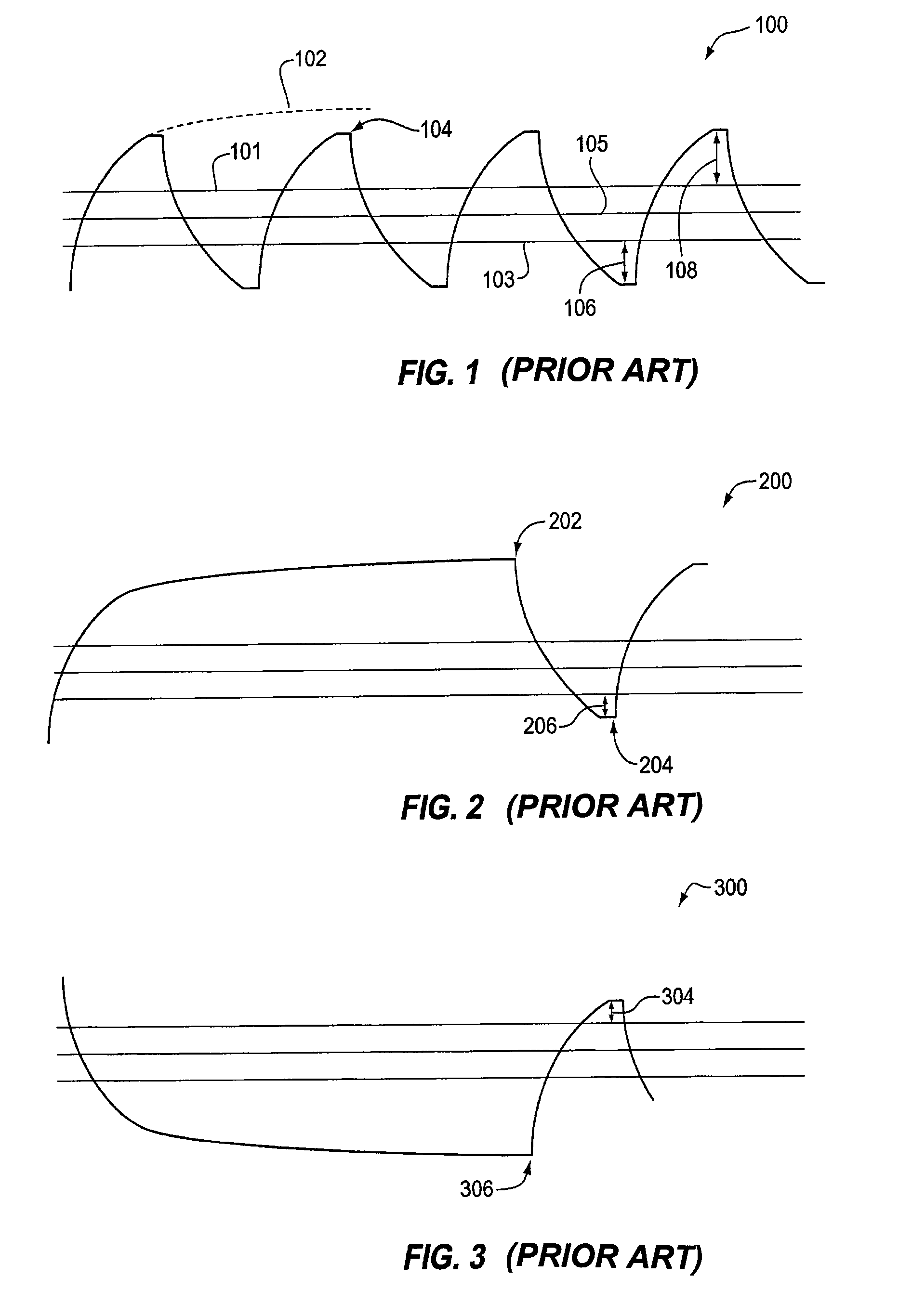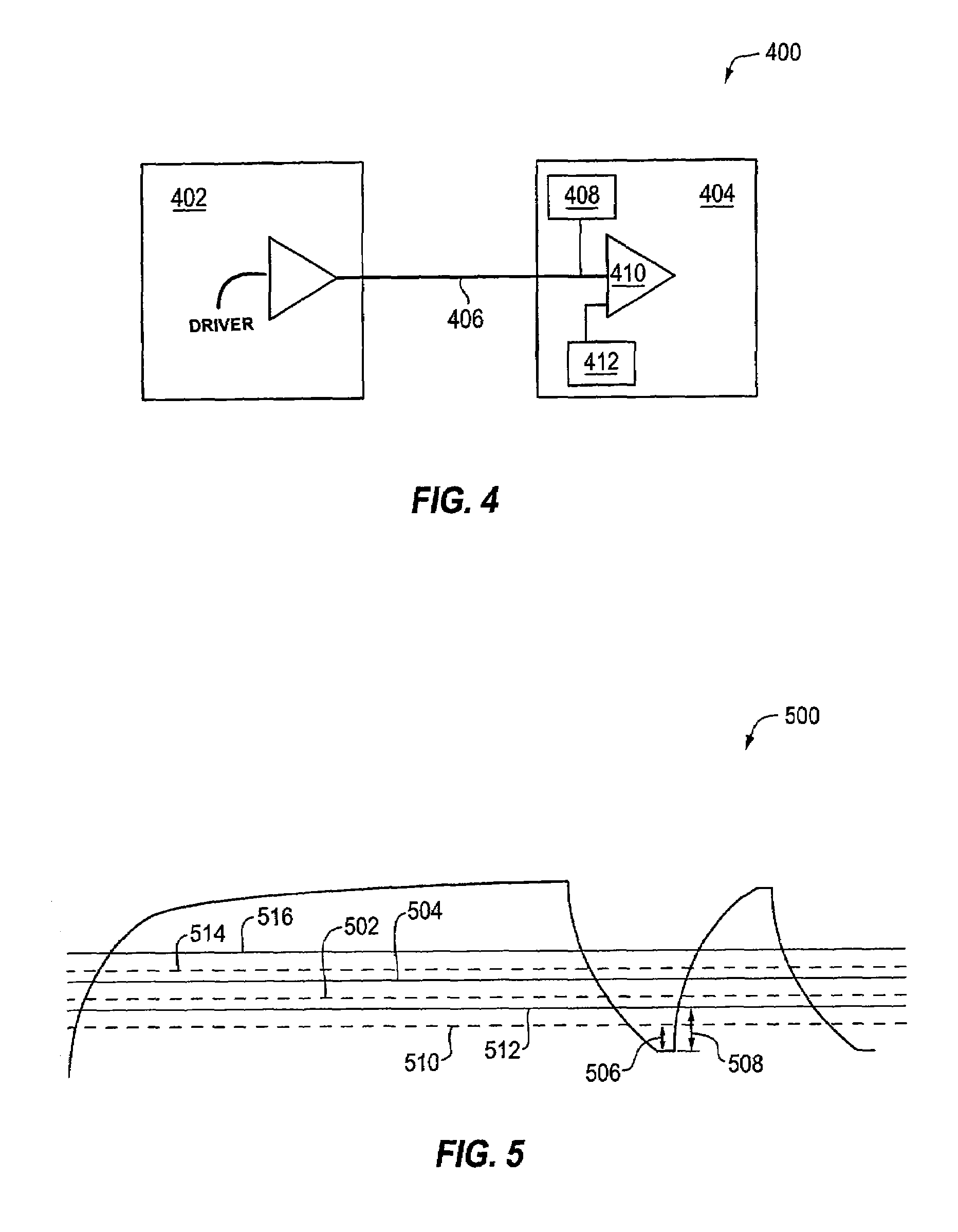Methods and apparatus for equalization in single-ended chip-to-chip communication
a single-ended chip and chip technology, applied in the field of communication, can solve the problems of voltage level loss of the edge that the driver drives onto the board trace, the loss of high-speed single-ended signaling over relatively long board traces, and the loss of voltage level of the higher frequency components of a voltage step, so as to improve the diminished voltage margin
- Summary
- Abstract
- Description
- Claims
- Application Information
AI Technical Summary
Benefits of technology
Problems solved by technology
Method used
Image
Examples
Embodiment Construction
[0024]In the following description, numerous details are set forth. It will be apparent, however, to one skilled in the art that embodiments of the invention may be practiced without these specific details. In other instances, well-known structures, devices, and techniques have not been shown in detail, in order to avoid obscuring the understanding of the description. The description is thus to be regarded as illustrative instead of limiting.
[0025]Reference in the specification to “one embodiment” or “an embodiment” means that a particular feature, structure, or characteristic described in connection with the embodiment is included in at least an embodiment of the invention. The appearances of the phrase “in one embodiment” in various places in the specification are not necessarily all referring to the same embodiment.
[0026]FIG. 4 illustrates an exemplary chip-to-chip communication system 400 in accordance with an embodiment of the present invention. The communication system 400 inc...
PUM
 Login to View More
Login to View More Abstract
Description
Claims
Application Information
 Login to View More
Login to View More - R&D
- Intellectual Property
- Life Sciences
- Materials
- Tech Scout
- Unparalleled Data Quality
- Higher Quality Content
- 60% Fewer Hallucinations
Browse by: Latest US Patents, China's latest patents, Technical Efficacy Thesaurus, Application Domain, Technology Topic, Popular Technical Reports.
© 2025 PatSnap. All rights reserved.Legal|Privacy policy|Modern Slavery Act Transparency Statement|Sitemap|About US| Contact US: help@patsnap.com



